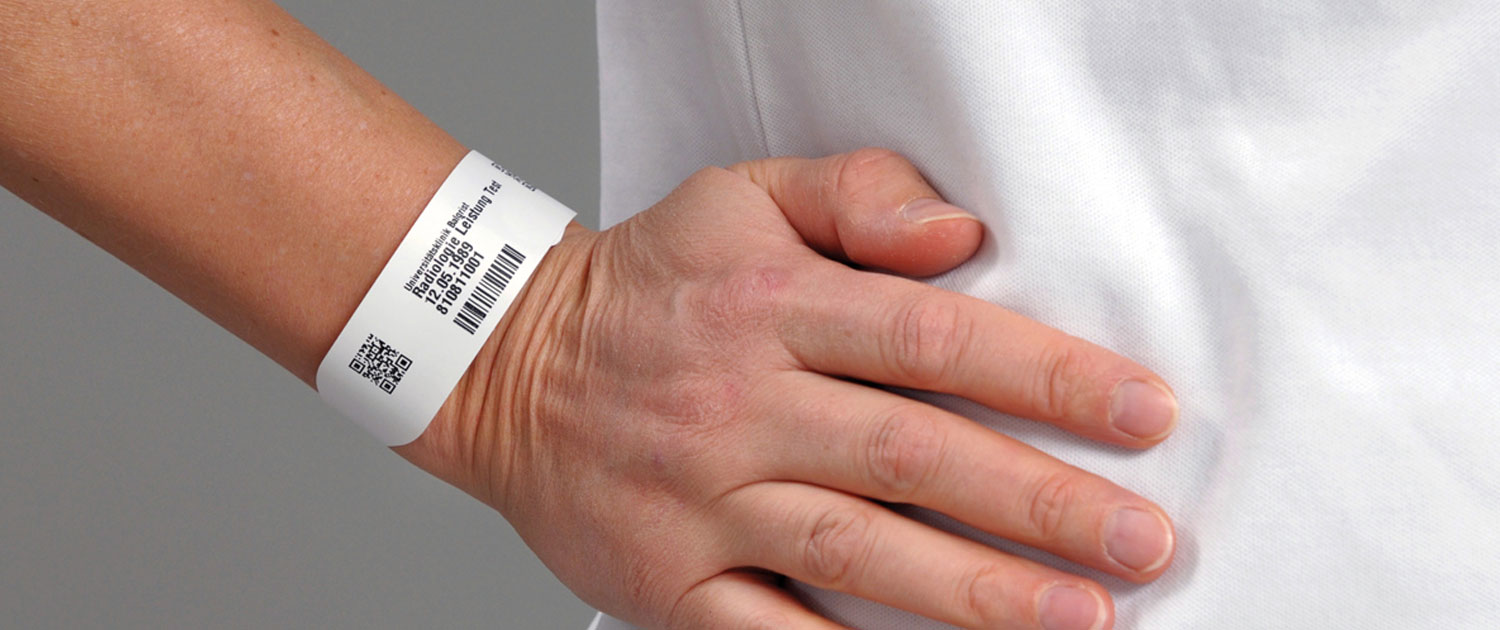Discovering the Numerous Kinds of Patient Identification Band Made Use Of in Clinical Facilities
In the detailed world of medical care, the important duty of Patient Identification bands frequently goes undetected. These bands, varying from basic paper wristbands to advanced RFID bands, develop the foundation of Patient safety and security protocols, making sure accuracy in Patient Identification.
Recognizing the Significance of Patient Identification Bands
While they might appear like simple accessories, Patient Identification bands play a vital role in clinical centers. These bands offer as an essential device for validating Patient identity, avoiding medical mistakes connected to misidentification. Patient Identification bands also aid in simplifying management jobs, making sure precise record-keeping and billing.
Traditional Paper Wristbands: Their Use and Limitations
Typical paper wristbands have actually been a staple in Patient Identification throughout different medical centers. While their use is extensive, they harbor particular restrictions that may impact their performance in Patient management. This section will certainly concentrate on the scope of their application and the inherent downsides connected with their use.
Paper Wristbands: Use Scope
In the world of Patient Identification, paper wristbands have actually long held an important role. These bands are commonly utilized in outpatient settings, where the Patient's stay is short-lived. The wristbands consist of important details such as the Patient's name, day of birth, and a distinct Identification number. This basic, yet effective system, enables physician to quickly and properly identify individuals, guaranteeing the proper treatment is carried out. Paper wristbands are also utilized in emergency situation circumstances, where quick Identification is vital. Their use reaches occasions like blood donation drives and mass inoculation programs, better highlighting their convenience. Despite improvements in technology, the simple paper wristband continues to be a dependable and economical solution for Patient Identification in different healthcare scenarios.
Limitations of Paper Wristbands
Regardless of their extensive usage, paper wristbands are not without their downsides. In addition, paper wristbands often do not have the technological capacities of more modern-day options, such as barcoding or RFID chips, limiting their performance to merely showing written details. Paper wristbands can cause pain or skin irritation to some people, particularly when put on for extended durations.
Barcoded Wristbands: Developments in Patient Identification
While Patient Identification has long been an important facet of medical care, the advent of barcoded wristbands signifies a significant leap ahead. These bands take advantage of the simplicity of barcoding innovation, enabling for Patient info to be rapidly scanned and accessed. They improve the speed and accuracy of Patient Identification, reducing the threat of clinical mistakes connected to misidentification.
Superhigh Frequency Identification (RFID) Bands: a Step Towards Futuristic Healthcare
The evolution of Patient Identification bands has actually brought regarding the introduction of Radio Regularity Identification (RFID) Bands (patient identification band). These innovative devices existing vital benefits for health care facilities, offering a more reliable and technically advanced means of Patient Identification. The application of RFID in healthcare is a significant action in the direction of a much more futuristic strategy to Patient management and safety
Recognizing RFID Bands

RFID Bands: Secret Advantages
Embracing a future where technology and healthcare combine, superhigh frequency Identification bands use a number of essential advantages. Primarily, directory these bands improve Patient safety and security by supplying precise, instant Identification, thereby reducing clinical mistakes. RFID bands can keep a vast amount of Patient information, including case history and allergic reactions, making it possible for customized care. They also streamline management jobs, as the automated information entry changes hand-operated processes, improving performance and minimizing documents. Additionally, RFID bands offer real-time monitoring of clients, critical in risky atmospheres such as surgery or extensive care. These bands are resistant and long lasting to environmental aspects, ensuring constant visit this site right here functionality. Overall, RFID bands stand for a significant innovation in Patient Identification innovation, benefiting both patients and doctor.
Implementing RFID in Healthcare
As we enter a technologically innovative era, the implementation of RFID bands in medical care ends up being progressively important. These bands supply a smooth means to track and identify individuals, guaranteeing their security and improving performance in treatment procedures. RFID bands supply countless advantages over typical Identification techniques. They can save a huge quantity of data, including the Patient's case history and therapy strategies, which can be quickly accessed by doctor. This data aids doctors make educated decisions relating to the Patient's treatment plan. Furthermore, RFID bands decrease clinical errors by giving precise Patient Identification, which is important in stopping misdiagnosis or incorrect medicine management. Hence, the application of RFID bands is a considerable action towards enhancing Patient security and healthcare shipment.

Color-Coded Wristbands: Helping in Quick and Accurate Medical Diagnosis
In the dynamic atmosphere of a medical facility, color-coded wristbands have actually become important tools for swift and accurate Identification of a client's medical condition. These wristbands, put on by people, lug details shades that match to different medical conditions or standings. Red might suggest allergy threats, while yellow could represent a fall danger. This system is created to offer prompt visual cues to healthcare providers, boosting Patient safety and care top quality. In emergency scenarios, making use of these wristbands permits quick decision-making. The effectiveness of color-coded wristbands depends on the harmony of color interpretation throughout health care establishments, requiring usual standards for constant application.
Strategies for Effective Application and Monitoring of Patient ID Bands
Achieving optimal use Patient Identification bands necessitates a well-structured strategy for their application and administration. The very first step entails training all wellness personnel on the importance of correctly applying and checking out these bands. Secondly, healthcare facilities need to systematize making use of ID bands throughout all divisions, ensuring harmony and reducing discrepancies. Normal audits must be carried out to verify adherence to policies and to correct any inconsistencies. Patient education and learning is likewise vital; people need to recognize the purpose of the bands and the requirement for their continuous wear. patient identification band. Finally, it's important to have a backup strategy in area, such as barcode scanning or biometrics, to make sure that Patient Identification is never ever compromised.
Verdict
Patient Identification their explanation bands are vital in clinical centers to ensure security and precision. Reliable implementation and administration of these bands can substantially reduce medical errors, improve performance, and boost overall Patient care.
These bands, varying from basic paper wristbands to innovative RFID bands, create the foundation of Patient safety protocols, making sure accuracy in Patient Identification.The advancement of Patient Identification bands has actually brought concerning the emergence of Radio Frequency Identification (RFID) Bands. Overall, RFID bands represent a significant development in Patient Identification technology, benefiting both clients and health care suppliers.
RFID bands minimize clinical mistakes by supplying precise Patient Identification, which is essential in avoiding misdiagnosis or wrong medication administration. Patient education and learning is additionally critical; people have to recognize the objective of the bands and the requirement for their continuous wear.